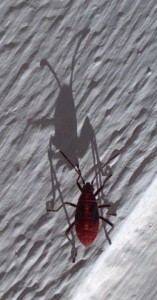As it gets cooler, and winter approaches, pests may be trying to make their way into your home. And that could mean big problems!
As the weather warms and the ground thaws, spring pests will start to emerge from their winter hiding places to enjoy all the good things that the season has to offer. The additional pest activity can be a nuisance for homeowners, so be sure to keep an eye out for signs of infestations. Insect infestations can cause issues inside and outside the home that can be annoying and expensive to fix. Here are some common springtime insect pests to watch for, and the potential damage that can be caused by letting their populations get out of control:
- Japanese Beetles– Japanese beetles begin the spring in their grub stage, nibbling away at your lawn’s root system. This can lead to dead spots and bare areas in the lawn which require reseeding. When the temperature gets warm enough, the grubs emerge from the ground as beetles and feed on the leaves of plants and trees, including ornamentals like roses.
- Ticks– Ticks start appearing in the spring, and can cause a number of problems if they are hanging out in your yard. Their bites, while occasionally very painful to people or pets, are usually just a mild annoyance. However, being bitten should be taken seriously, as ticks are known for spreading diseases such as Lyme Disease.
- Boxelder Bugs– Boxelder bugs don’t typically cause extensive damage to homes or foliage during the spring. They spend their spring and summer feeding and reproducing on a select few kinds of trees, primarily female box elder trees, and only occasionally cause minor damage to fruits and leaves. Crushing them can release an unpleasant odor, and their feces can stain light colored surfaces. Allowing their population to go unchecked does create a nuisance in the fall, when they reenter the home in preparation for winter.
- Mosquitoes– Mosquito eggs begin hatching in the spring, and reach their adult stage in less than two weeks. As with ticks, mosquito bites are mostly an annoyance, but they can also spread diseases such as West Nile and yellow fever.
- Ants– Ants also emerge from their nests in the spring, and are often drawn into your home in search of a meal. In addition to crawling all over any food that has been left out, research has shown that ants can cause or exacerbate asthma, allergies, and other respiratory issues for those sensitive to such problems.
More information on these pests, including signs of infestations, can be found on the National Pest Management Association’s website. As with other pests, spring insects are best handled by a professional. If you see any signs of an infestation in your home or workplace, please don’t hesitate to contact us!

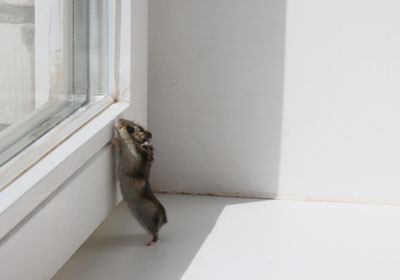
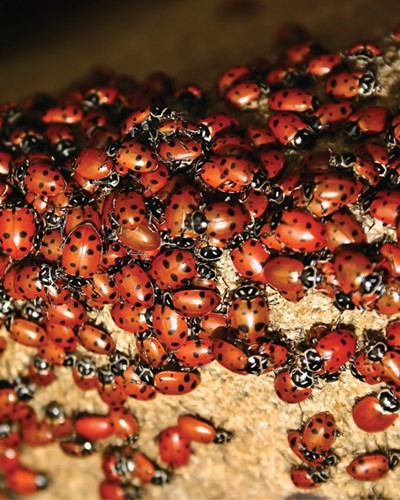
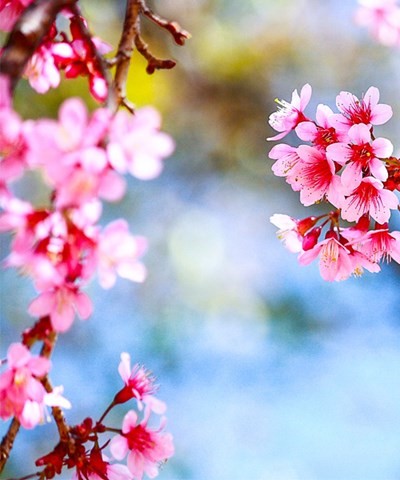
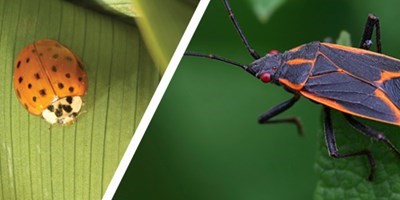
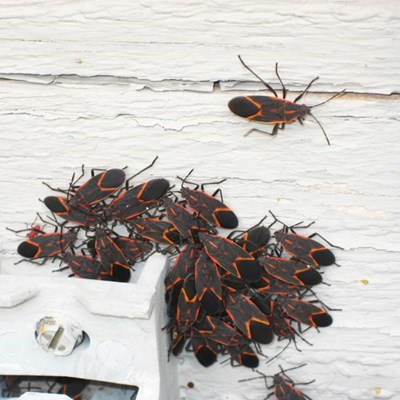
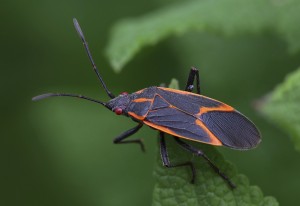 During summer, boxelder bugs feed on leaves, flowers, and seedpods of boxelders and silver maples, where they do minor damage to the trees. During fall, they
During summer, boxelder bugs feed on leaves, flowers, and seedpods of boxelders and silver maples, where they do minor damage to the trees. During fall, they 